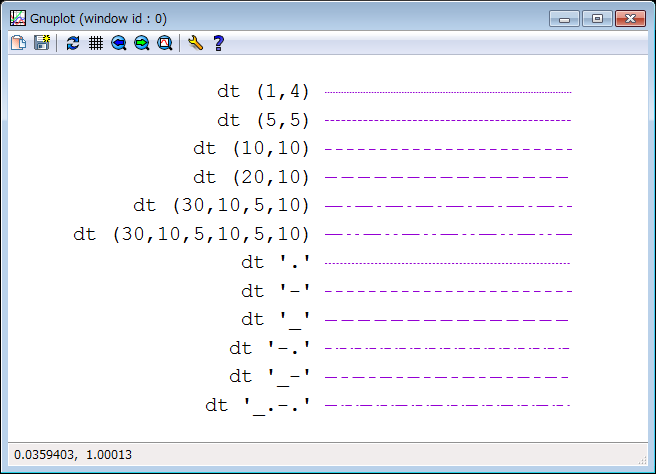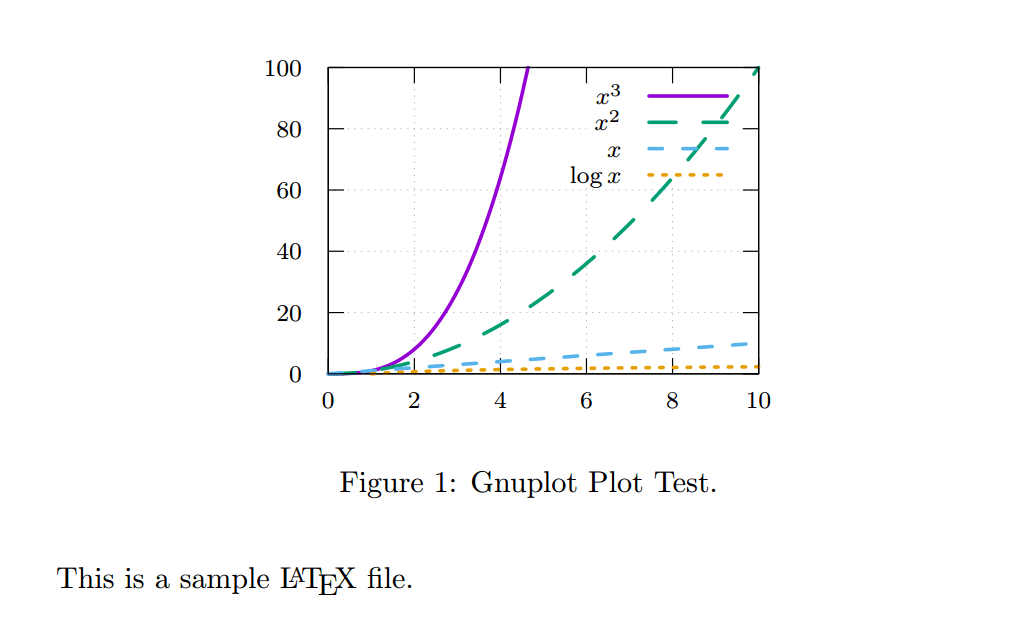
GNUPLOT LATEX PDF
By passing the -dEPSCrop argument to ps2pdf, we can retain the bounding box in the eps file, so the pdf graph won't be bigger. Of course, this assumes that you have ghostview installed on your computer. Using the eps terminal is much better, and we can easily convert the file by In principle, one could use the pdf terminal of gnuplot, but the eps terminal is much more mature, and the end result with pdf is far from the expected. If you want to compile with pdflatex, first you have to convert the postscript file to pdf. You should create a LaTeX file, which includes nothing but the file that we have just produced, errorf.tex. So, let us suppose for the moment that you want to work with postscript, and not with pdf.

The destination is the same in both cases. We then have got to combine these two by invoking LaTeX or pdflatex, depending on the exact route you would like to follow.
GNUPLOT LATEX MAC
Start Gnuplot from your Mac Terminal: gnuplot gnuplot> It prompts you with gnuplot> as shown, but I won’t show that prompt in the examples below. (At this point, I would also recommend re-setting the terminal, otherwise, there is no guarantee that gnuplot has closed both your output files, and this could create some trouble later on.) errorf.eps will contain the "visual" part of the graph, i.e., the axes, tics, points, lines, arrows and the like, while errorf.tex holds all the typographic elements. The latest version of Gnuplot works with both formats without requiring you to specify a column-separator. Set label 1 at -2, 0.5 "$erf(x) = \\frac etc.Īnd replot your graph, you will get two files. This is my Gnuplot Code: set termoption enhanced set title 'Title testa \alpha \alpha' font 'CMU-Serif, 18' set xlabel 'Month' set ylabel 'Precipitation (mm)' set xrange 0.5: 12.5 set xtics 1,1,12 set key set pointintervalbox 2 plot '08Data.dat' using 1:2 with linespoints \ linecolor 'FF7800' linewidth 2 pointtype 7 pointsize 0.75 pointinterval -1 \ title. But I found that some LaTeX commands are unavailable. For the sake of example, we will plot error function, and write its definition on the figure as follows: I have attempted to demonstrate a LaTeX formula with Gnuplot 5.0. As always, first we have to set our terminal asĪt this point, we can set labels with any LaTeX symbols, the generated output will contain it properly.

Plotting graphs is an important activity for most of our analysis work. In cases like this, we can make use of the epslatex terminal. Gnuplot + LaTeX: The Ultimate Plotting Experience. While some terminals have an enhanced version, where some symbols can be written, (you can find the availble symbols in Dick Crawford's postscript guide.) it is not always enough. There are cases when a couple of special symbols are needed in a graph, e.g., when a formula is to be written on top of the curves.

The epslatex terminal The epslatex terminal


 0 kommentar(er)
0 kommentar(er)
